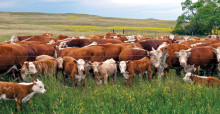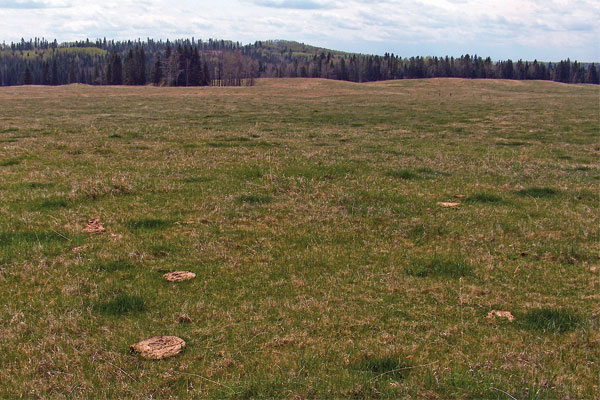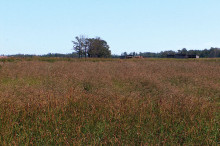Can it be done? Yes, with a little understanding of forage growth and grazing management, some planning, oh, and a little commitment to do the daily chores to make it work. A little rain now and then would help too—although, the results in the title were during a drought.
Now, the economic impact of being able to graze your horses year-round, or almost year-round, is a no-brainer for anyone who has to buy hay for their horses. OK, so your problem is that you’re not even able to graze your horses through the growing season. Your horse pasture is almost reduced to bare ground with a big weedy patch in the corner where the horses dump all the time and you have to feed all year.
Let’s take a look at the big picture for a moment. Allan Savory, a wise and elderly biologist who many of you will recognize, put it this way. “Desertification is a fancy word for land that is turning to desert,” says Savory, “and this happens only when we create too much bare ground.” Check out this video clip “How to Green the World’s Deserts and Reverse Climate Change.” www.ted.com/talks/allan_savory
Yes, the world’s deserts are increasing in size and number continuously and, while it’s very small compared to the large continental deserts, your horse pasture and all of the other horse pastures contribute to the problem. You’re not alone though, all of the poorly managed pastures and grasslands in the world, regardless of the kind of livestock grazing them are also adding to the problem.
But now it’s starting to sound like I have a vendetta against livestock. On the contrary, while livestock are part of creating the problem, they are also the only viable solution to this problem.
How? By using livestock to mimic the large herds of grazing animals, like bison, that used to move across the great grasslands of our nation before we made a mess of it. So you say, “But I only have a few horses. How can I mimic the great herds of bison?
There is hope. You can mimic nature with grazing management. While not as dramatically, you can do it with a few horses. You can have a green, productive pasture, without the weedy patch in the corner that the horses won’t graze. Keep reading as I walk you through the realm of forage plant growth and what you can do to have a healthy, productive pasture.
The Basics of Plant Growth
Most of the forage plant is below the soil surface. We tend to think of the roots being there to support the top growth, but it’s kinda like the chicken and the egg thing—which comes first? The top growth acts as a solar panel harnessing the sun’s energy for photosynthesis to occur. The top growth is also the breathing mechanism for the plant. On the other side, there wouldn’t be any top growth without roots. The roots gather water and nutrients from the soil, as well as a whole lot of symbiotic relationships with a huge variety of soil microorganisms. We basically need to remember the concept: “No roots, no shoots” or “No shoots, no roots”.
GRASS GROWTH
Stage one is what we’re used to seeing in early spring, as seen in Figure 2, or in many continuously grazed pastures. The pastures are greening up, yet we see very little growth for quite a long time. When pastures are grazed severely, grass growth also needs to start from stage one.
 Effects of Grazing on Grass
Effects of Grazing on Grass
Grasses that are grazed severely and often, not allowing sufficient time for recovery, will lose much of their roots. Remember the phrase “No shoots, no roots. No roots, no shoots”.
BC RANGE WAR: GARDENS TO GRASSLANDS ALIEN INVASION
When it comes to range manage-ment in the beautiful Okanagan Valley of B.C.’s southern interior, ranchers have to manage not only for productive forage from the native bunchgrasses but also the complex challenges that come with being located in a valley that is growing in population and popularity.
You can read the whole article in the June/July 2013 issue of Canadian Cowboy Country magazine.
To subscribe, click here or call Kendra at 1-800-943-7336.



